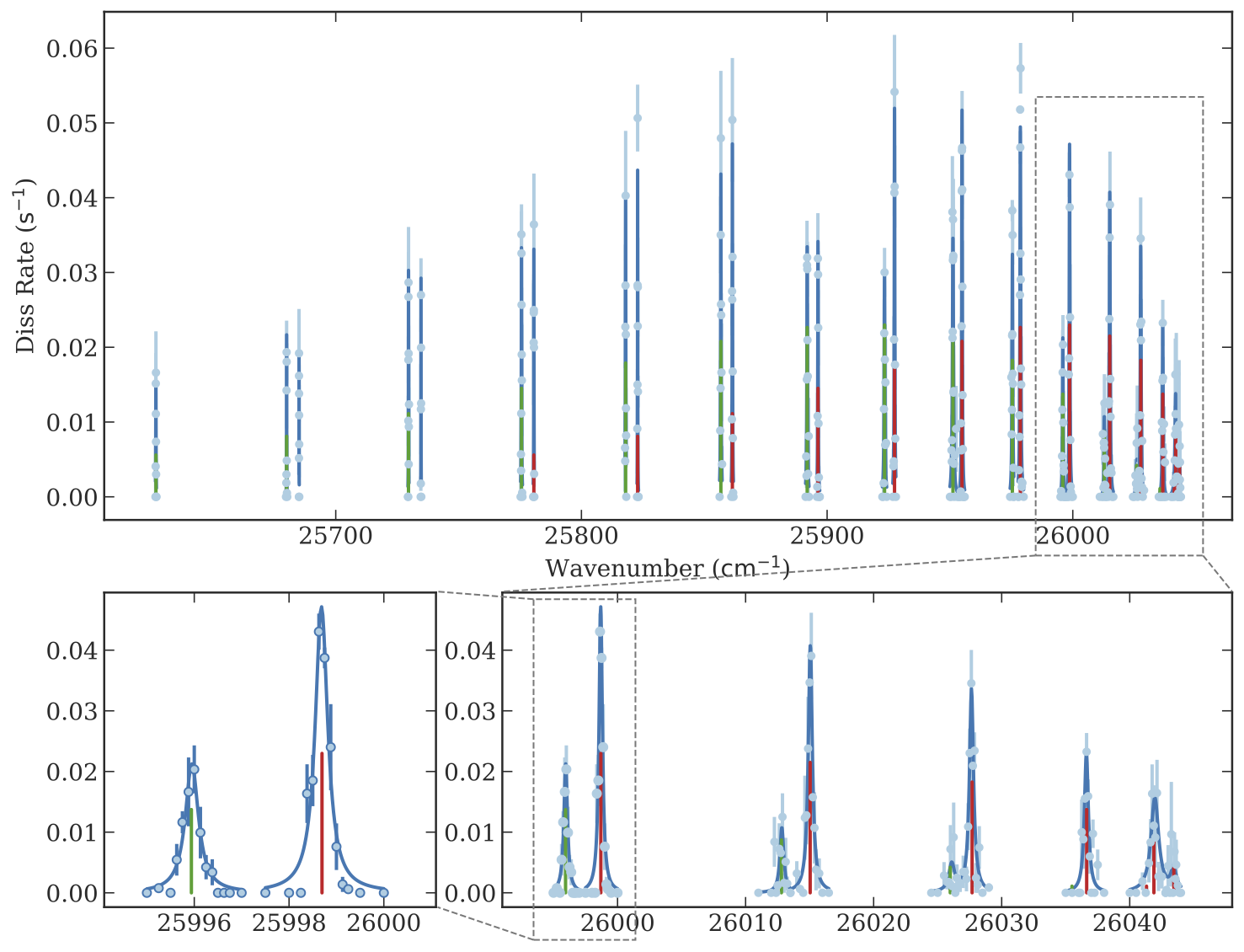November 30, 2024

Molecules have a complex internal structure beyond the usual electronic degrees of freedom seen in atoms. This structure can be leveraged to study fundamental physics, astrochemistry, and quantum information processing. Unlocking these applications requires precise knowledge of molecular internal states, gained through spectroscopy in the lab. For molecular ions in particular, co-trapping them with atomic ions provides a controlled, isolated environment with long interrogation times, enabling detailed probing of their internal structure.
In this paper, we conduct precision spectroscopy of calcium hydride (CaH+) molecular ions – co-trapped in a Coulomb crystal with calcium ions - using the technique of resonant multi-photon dissociation spectroscopy (REMPD). This work is a natural extension of the previous pioneering work done in the Brown lab establishing vibronic and rovibronic spectroscopy of CaH+. In this work, we resolve individual rotational transitions connecting two vibrational states in different electronic states with unprecedented precision.
The high-resolution spectra allow us to determine key parameters of the excited state of CaH+ to record precision. These experimentally determined constants provide valuable tests for theoretical quantum chemistry methods. Using this spectroscopic data, we are also able to extract the local environment temperature of our system due to the fact that the population of these rotational states that we probe thermalizes to the environment. This ability to probe the black-body field in-situ is vital for experiments involving molecules and we plan to use this technique to demonstrate sympathetic rotational state cooling of CaH+. Read more here: https://arxiv.org/abs/2412.00362